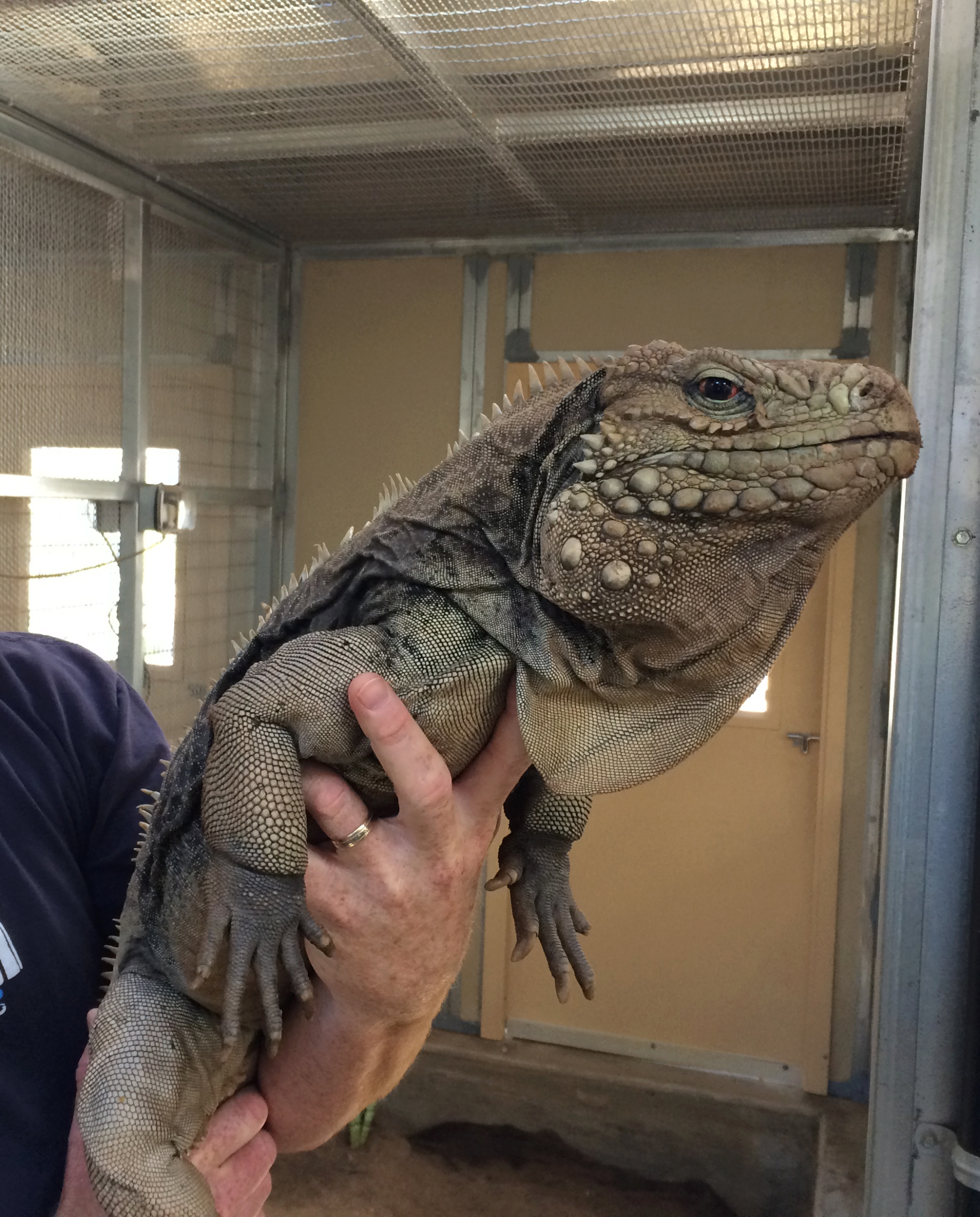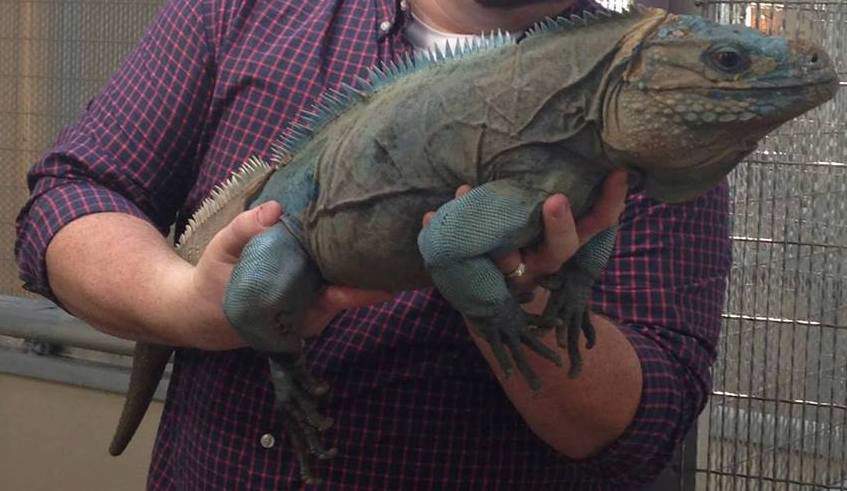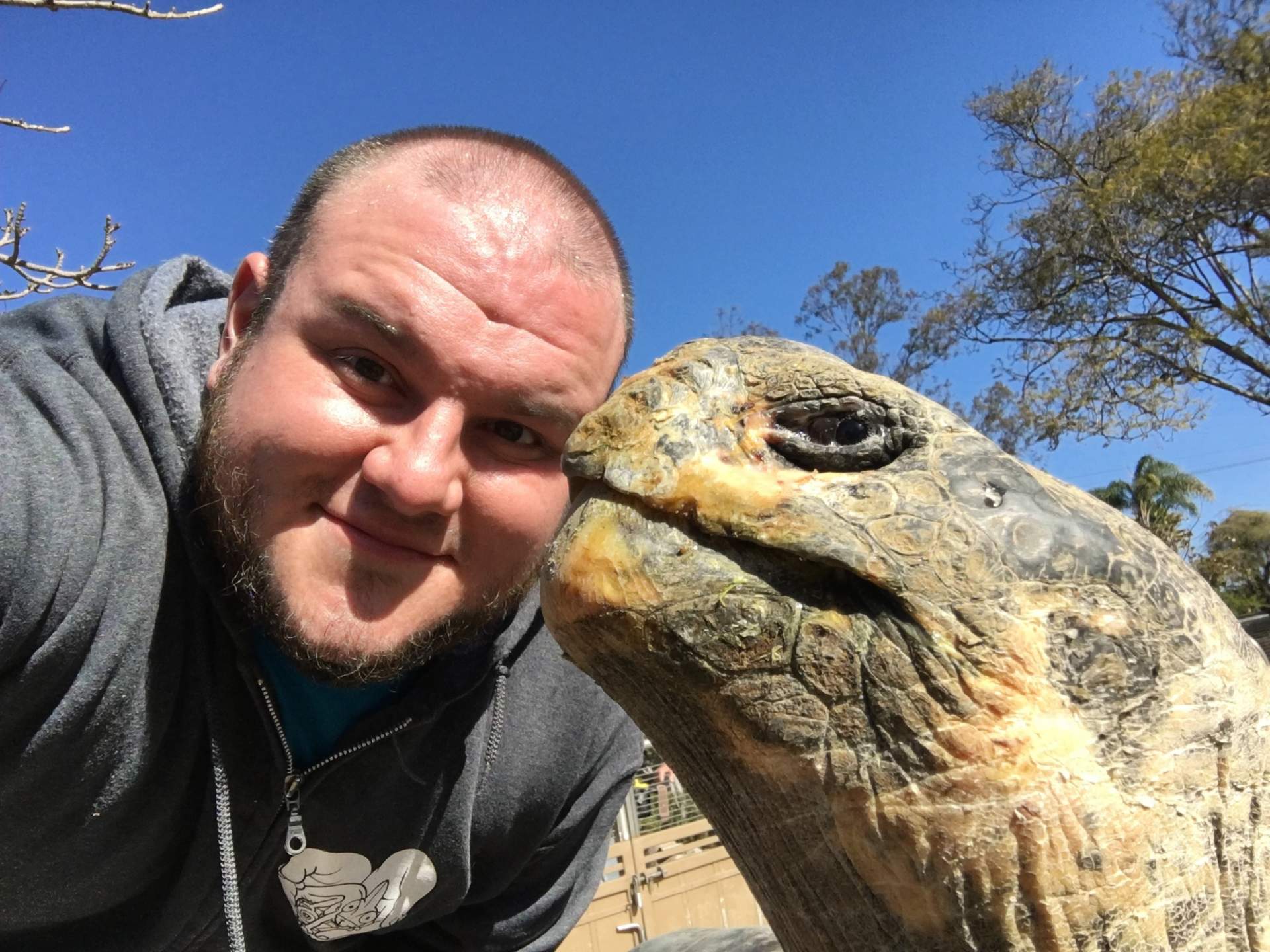Thinking Outside of the Terrarium

(pictured: Cuban Rock Iguana)
We all love our reptilian and amphibian pets. Some of the most fun in keeping them is learning about their natural history, where they come from, how they live, what they eat, and turning that into knowledge we use to keep them in captivity. We try our best to mimic their natural environment with different types of heating and lighting, managing the humidity, and giving them a varied diet with the right supplements. Sometimes, their habitats are very organized and simple, and other times we take to great lengths to customize the habitat with live plants, running water, and highly controlled lighting and heating. No matter which way you care for your pet, they always help us learn and feel closer to nature.
One thing we don’t always think about is how these animals in captivity represent wild populations all over the world. Bearded dragons make an amazing pet lizard, and wild ones can be found all over central Australia. Ball pythons are friendly and interesting snakes that are fun to handle and interact with, but they spend most of their life hiding in burrows in the grasslands and savannas of northern Africa. While it is fulfilling and incredible to experience these creatures at home, we as a society need to remember the importance of the animals in the wild.
Conservation efforts are happening all over the world for creatures as small as ants, up to some of the largest living animals on the planet, whales. Every living thing is an important piece of its ecosystem, and many animals are under threat of extinction and disappearing every day. Reptiles and amphibians are no stranger to the pressures humans put on wild habitat. Amphibians are nature’s environmental indicators. Due to their permeable skin, they absorb toxins in their surroundings and can have severe effects from pollution and environmental changes. This makes amphibians especially vulnerable. According to The Biodiversity Group, there are 6,644 species of frogs, salamanders, and caecilians. Unfortunately, nearly one third are endangered and nearly 170 are already believed to be extinct. When it comes to reptiles, there is much less data on the status of all 8,734 species, with only 1,437 having sufficient data to classify them. Of those with sufficient data, 382 are listed as endangered. Some of the more well-known are many of the crocodilian species, sea turtles, and Caribbean Island iguanas.

(pictured Grand Cayman Blue Iguana)
The thought of so many animals in danger of no longer being around is a lot to handle. It’s scary to think that some of the most beautiful and incredible reptiles and amphibians which we all love so dearly, may no longer exist within our lifetime. It’s an overwhelming fear, but don’t worry, THERE’S HOPE! Due to the help so many of these animals need, there are growing numbers of conservation organizations putting in the time and money needed to save these animals. Sometimes community awareness is key and getting people to understand about the importance of the animal is a big hurdle. Other times its environmental factors such as pollution or loss of habitat and getting funding to secure habitat and address other environmental factors is needed. It can also be viral or fungal situations that are causing diseases to spread and kill many of these animals. In those situations lab studies and scientific work needs to be done to see how to combat the problem. One thing that is a common factor for all conservation organizations is a need for funding and support.
Make sure you do your research on the programs organizations are sponsoring and what their mission statement and goals tell you about the work they are doing. There are organizations that have a desire to help animals, but their real goal is to end the keeping of animals in captivity, so beware when donating. Here’s a great list of reptile and amphibian conservation organizations that can always use support:
Herpetological Conservation International (HCI)
HCI is an awesome organization with the mission to “conserve imperiled reptiles and amphibians through the creation of land conservancies and research.” This is a new organization with a board or directors made up of knowledgeable and highly credible men and women that have worked with reptiles and amphibians all over the world. They have very little overhead and their staff is completely volunteer based, so 75%+ of money donated goes into saving the animals we all care about. Currently they are supporting Project Pondo. This is a project based in South Africa to become the first ever chameleon conservation preserve for the highly endangered Pondo Chameleon, as well as the other endangered species that live there such as the Giant Golden Mole, Samango Monkey, Cape Parrot, and Pondoland Cannibal Snail.
The International Iguana Foundation (IIF)
The International Iguana Foundation was founded in 2001 with the mission to consistently fund critical iguana conservation initiatives. In 2001, IIF was critical in the recovery of programs of Grand Cayman Blue Iguana, the Jamaican Iguana, and the Anegada Island Iguana. In 2005, IIF began to expand its efforts outside of the Caribbean, and began working on conservation programs involving the Fijian Iguanas of the genus Brachylophus and Spiny-tailed Iguanas of the genus Ctenosaura. Their board is made up of Zoological, Scientific, and Private individuals with a long history of iguana research and conservation. Many of them are also members of the International Union for Conservation of Nature’s Species Survival Commission - Iguana Specialist Group.
The Turtle Survival Alliance was formed in 2001 as part of a response to the unsustainable harvesting of Asian turtles for Chinese markets. In conjunction with IUCN, TSA created branches in Europe and the U.S. with a diverse partnership including many zoos, aquariums, universities, private breeders and serious hobbyists, veterinarians, conservation NGOs, and turtle rescue organization. Due to the diversity of the TSA, they have been able to create breeding programs for many critically endangered species, known as Assurance Colonies, both within the animals’ native habitat, and all around the world. In 2013, TSA opened the Turtle Survival Center in South Carolina, and in just 3 years was recognized as a world class conservation center which houses more than 700 turtles and tortoises, representing 32 of the world’s critically endangered species.
The Orianne Society was inspired by a young girl named Orianne. It was founded in 2008 after she had the opportunity to handle an Eastern Indigo snake and wanted to help save this threatened species. Originally their mission and goal was focused on the Eastern Indigo snake and its habitat. Over time, they expanded their focus to Gopher Tortoises, and Eastern Diamondback Rattlesnakes. They now have three habitat initiatives working with 7 main species, along with many others within that habitat. They also have a citizen science initiative and work hard to get the public involved in the conservation of these beautiful animals. This organization is a science based conservation organization that is well known for their work and credibility and is led by a board of scientists and herpetological professionals.
Wisconsin’s Amphibian and Reptile Conservation Fund
Many times there may be local efforts to help conserve some of the reptiles and amphibians in your city or state. In Wisconsin, where Zilla is based, we have been able to sponsor the Wisconsin Amphibian and Reptile Conservation Fund, which puts money towards conservation efforts of the reptiles and amphibians native to Wisconsin. This fund was launched as an endowment fund by the Natural Resources Foundation of Wisconsin, and is focusing its efforts on the endangered Ornate Box Turtle, Eastern Massasauga Rattlesnake, and Blanchard’s Cricket Frog.
There are many other amazing conservation organizations all doing work around the world to help us save the animals that we love and appreciate so they are still around for years to come. Zilla is working to support many organizations and conservational initiatives. Without the animals in the wild, how can we continue to learn about them and how they live? Take a moment to think about your favorite endangered reptile or amphibian and find an organization working to save them. Maybe this year instead of birthday gifts, you ask people to donate to that organization, or if they are near you, you can volunteer to help. Either way, every little bit we can do to help is critical in the future of all of these amazing animals.

(pictured Galapagos Turtle)
Zilla Brand Manager
